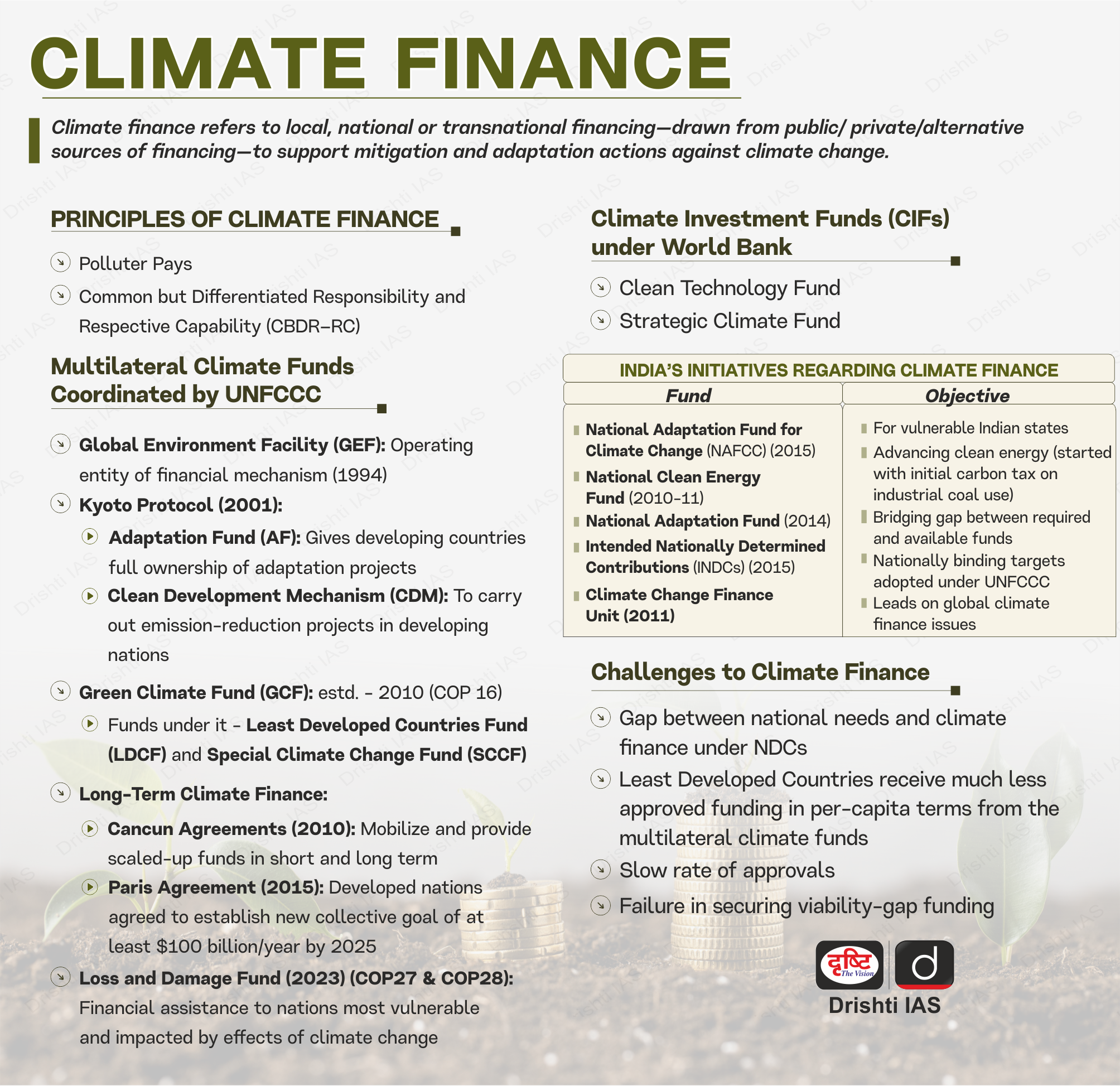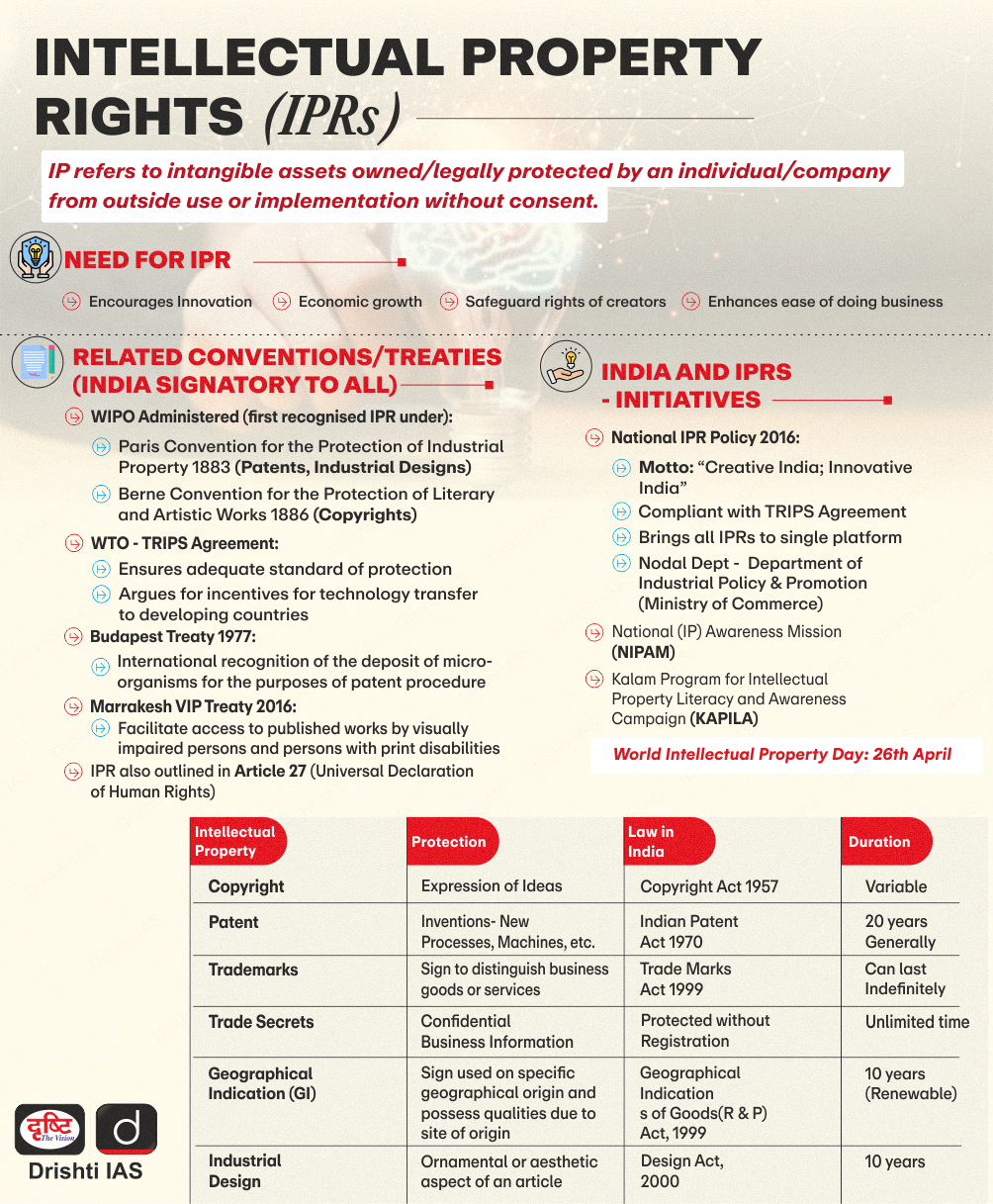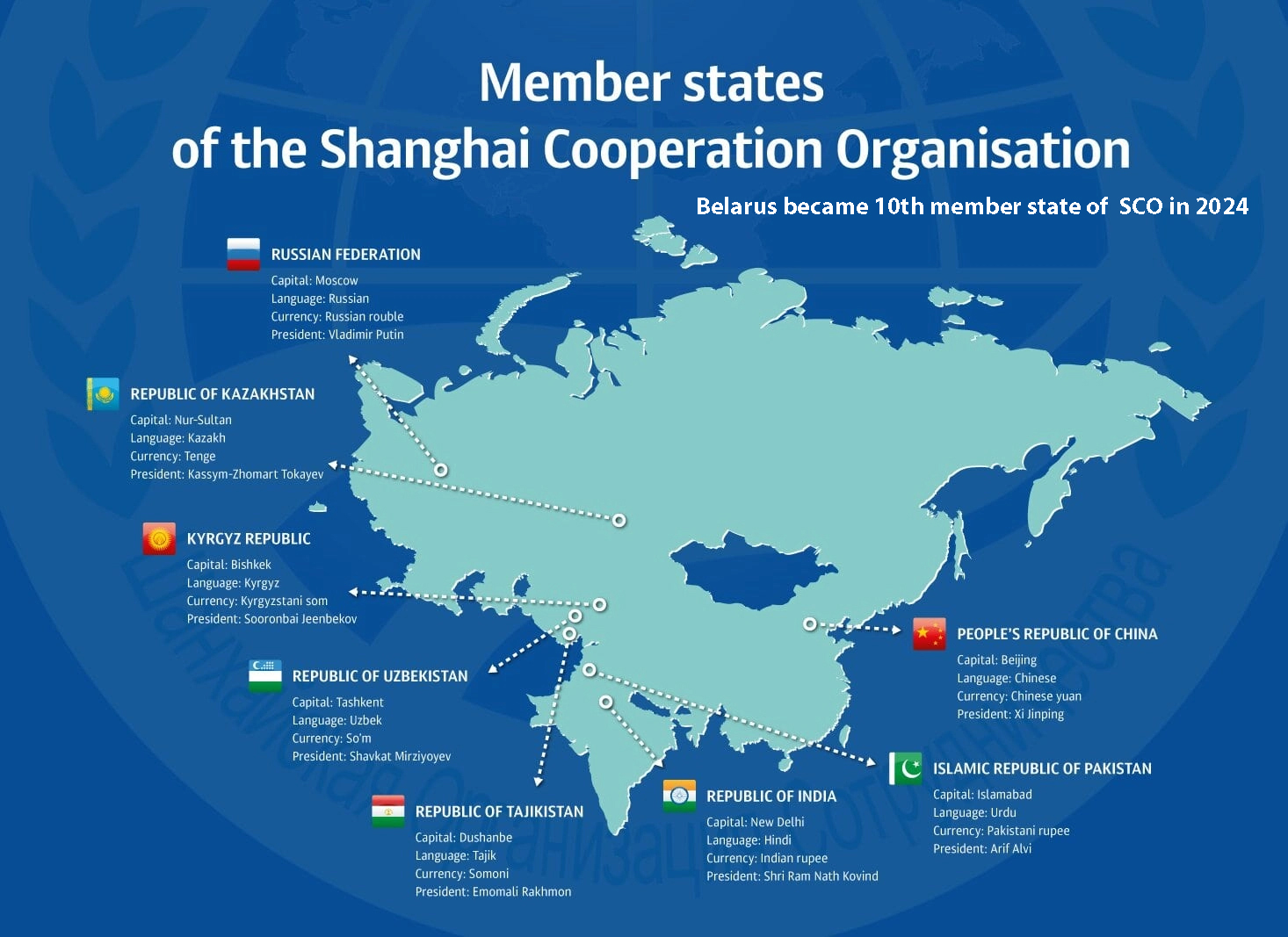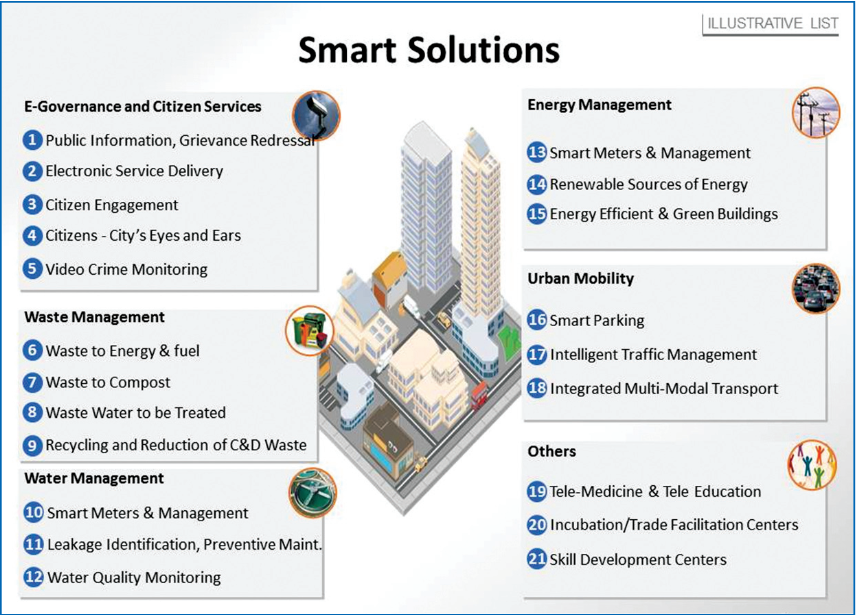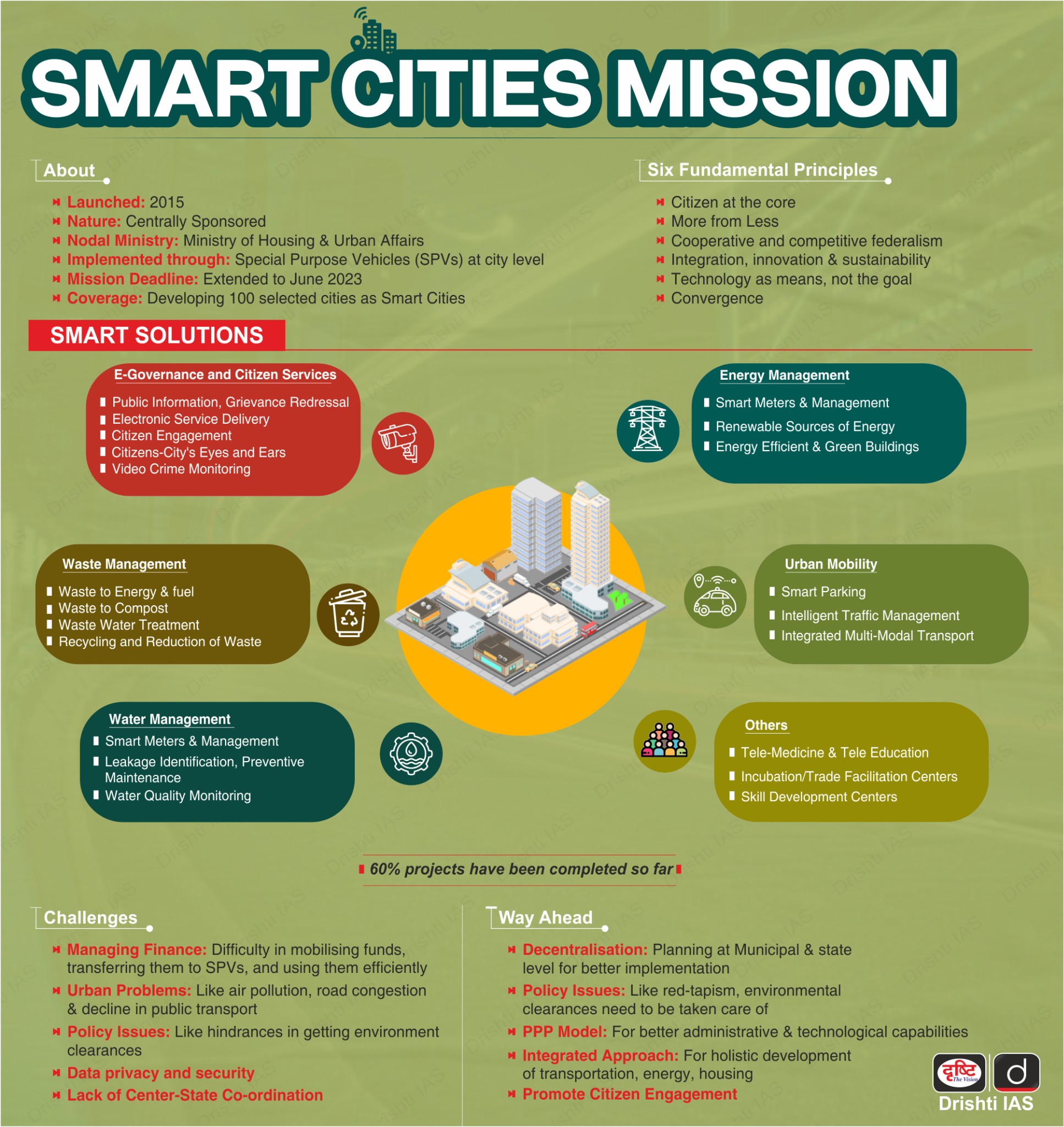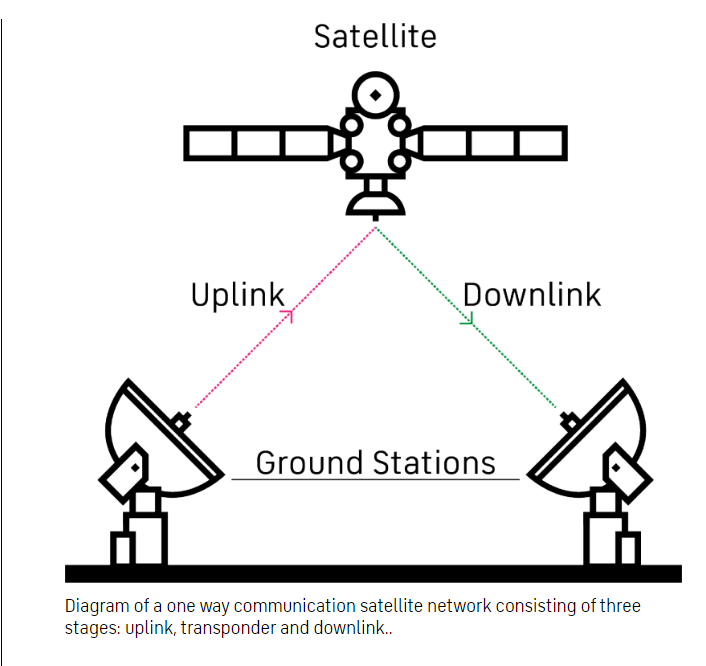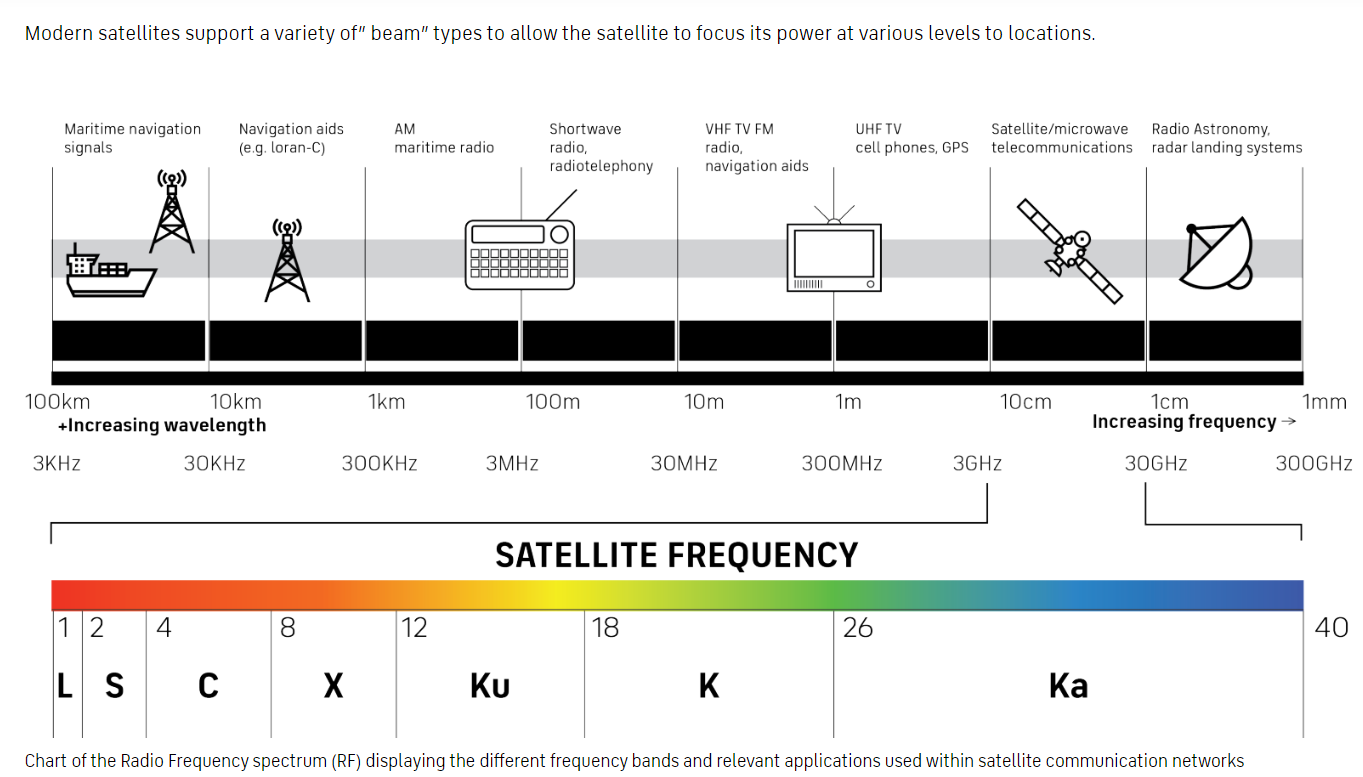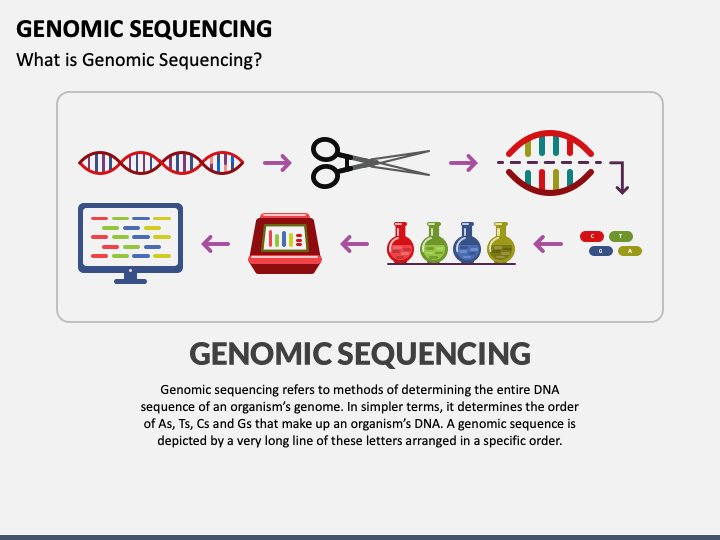Biodiversity & Environment
NITI Aayog Panel for Net-Zero Goal
For Prelims: Paris Agreement, United Nations Conference on Climate Change, COP26, COP 27, Nationally Determined Contributions (NDC), Net zero, National Hydrogen Mission, Biofuel, NITI Ayog
For Mains: NITI Aayog Action Plan to Achieve Net-Zero by 2070, Paris Climate Agreement and its Impacts.
Why in News?
Recently, NITI Aayog has formed dedicated multi-sectoral committees to prepare a policy design and create a roadmap for achieving its goal of becoming a net-zero economy by 2070.
- This has been started 3 years after India declared its goal to become a net-zero economy by 2070.
What are the Key Focus Areas of the Working Groups Formed by the NITI Aayog?
- About:
- NITI Aayog has formed 6 working groups. These groups will focus on developing policy formats, working models, and transition pathways for core sectors like macroeconomic implications, climate finance, critical minerals, and social aspects of energy transition.
- It will also form sectoral committees on transport, industry, buildings, power, and agriculture.
- The 6 Net-Zero Working Groups:
- Macroeconomic Implications: Examine the implications of net-zero pathways on macroeconomic indicators and suggest aligned monetary and fiscal policies.
- Climate Finance: Estimate India's climate finance needs for mitigation and adaptation, and identify potential sources of finance.
- Critical Minerals: Research and development, domestic manufacturing, and supply chain for critical minerals.
- Social Aspects of Energy Transition: Assess the social impacts of the energy transition and propose mitigating strategies.
- Policy Synthesis: Collate the reports of the sectoral committees and prepare a consolidated policy handbook.
- Sectoral Committees: Devise transition pathways for power, industry, buildings, transport, and agriculture sectors.
- Expected Outcomes:
- The deadline for all the working groups to submit their action plans is October 2024. The NITI Aayog report is expected to become a policy handbook for all central ministries for drafting climate-resilient and adaptive policies to achieve India's net-zero target by 2070.
What is Net-Zero Target?
- Net Zero refers to achieving an overall balance between carbon emissions produced and carbon taken out of the atmosphere.
- It is referred to as carbon neutrality, which does not mean that a country would bring down its emissions to zero.
- Further, absorption of the emissions can be increased by creating more carbon sinks such as forests.
- The removal of gases from the atmosphere requires futuristic technologies such as carbon capture and storage.
- More than 70 countries have promised to become Net Zero by 2050.
What are India’s Initiatives to Achieve Net Zero Target?
- National Action Plan on Climate Change: It aims at creating awareness among the representatives of the public, different agencies of the government, scientists, industry and the communities on the threat posed by climate change and the steps to counter it.
- India has promised to cut its emissions to net zero by 2070 at the Conference of Parties-26 (COP) Glasgow Summit.
- For this India outlined a 5-pronged 'Panchamitra' climate action target:
- Reach 500 GW Non-fossil energy capacity by 2030.
- 50% of its energy requirements from renewable energy by 2030.
- Reduction of total projected carbon emissions by 1 billion tonnes from now to 2030.
- Reduction of the carbon intensity of the economy by 45% by 2030, over 2005 levels.
- Achieving the target of net zero emissions by 2070.
What Steps can be Taken by India to Achieve Net-Zero Emission Target?
- Enhancing Carbon Sequestration: India can enhance its carbon sequestration potential by expanding its forest and tree cover, restoring degraded lands, promoting agroforestry, and adopting low-carbon farming practices.
- Carbon sequestration can not only offset emissions but also provide multiple co-benefits such as biodiversity conservation, soil fertility improvement, water security, livelihood support, and disaster risk reduction.
- Building Climate Resilience: India can build its climate resilience by strengthening its disaster management systems, improving its early warning and forecasting capabilities, investing in climate-proof infrastructure, developing climate-smart agriculture, enhancing health care services, and empowering local communities and institutions.
- Driving India's Green Transportation Revolution: There is a need to promote electric vehicles (EVs) by establishing a robust charging infrastructure network and offering incentives for EV adoption.
- Introducing innovative public transportation solutions such as electric buses, shared mobility services, and smart traffic management systems can reduce congestion and emissions.
- Climate Smart Agriculture: There is a need to encourage sustainable farming practices by promoting organic farming, agroforestry, and precision agriculture.
- Integrating technology-driven solutions such as remote sensing, IoT devices, and AI-based analytics can optimise resource utilisation, reduce water consumption, and enhance crop productivity.
- International Collaboration: India can leverage international collaboration by acquiring advanced clean technologies through technology transfer agreements with developed countries, securing international climate finance and sharing best practices with other developing countries.
|
Drishti Mains Question: Discuss India's pledge to achieve net zero emissions by 2070. Also, discuss the key policy measures and implications of this commitment for India's sustainable development priorities. |
UPSC Civil Services Examination Previous Year Question (PYQ)
Prelims
Q. The term ‘Intended Nationally Determined Contributions’ is sometimes seen in the news in the context of (2016)
(a) pledges made by the European countries to rehabilitate refugees from the war-affected Middle East
(b) plan of action outlined by the countries of the world to combat climate change
(c) capital contributed by the member countries in the establishment of the Asian Infrastructure Investment Bank
(d) plan of action outlined by the countries of the world regarding Sustainable Development Goals
Ans: (b)
Q. In the context of India’s preparation for Climate-Smart Agriculture, consider the following statements: (2021)
- The ‘Climate-Smart Village’ approach in India is a part of a project led by the Climate Change, Agriculture and Food Security (CCAFS), an international research programme.
- The project of CCAFS is carried out under Consultative Group on International Agricultural Research (CGIAR) headquartered in France.
- The International Crops Research Institute for the Semi-Arid Tropics (ICRISAT) in India is one of the CGIAR’s research centres.
Which of the statements given above are correct?
(a) 1 and 2 only
(b) 2 and 3 only
(c) 1 and 3 only
(d) 1, 2 and 3
Ans: (d)
Q Which of the following best describes/describe the aim of ‘Green India Mission’ of the Government of India? (2016)
- Incorporating environmental benefits and costs into the Union and State Budgets thereby implementing the ‘green accounting’.
- Launching the second green revolution to enhance agricultural output so as to ensure food security to one and all in the future.
- Restoring and enhancing forest cover and responding to climate change by a combination of adaptation and mitigation measures.
Select the correct answer using the code given below.
(a) 1 only
(b) 2 and 3 only
(c) 3 only
(d) 1, 2 and 3
Ans: (c)
Mains
Q. Describe the major outcomes of the 26th session of the Conference of the Parties (COP) to the United Nations Framework Convention on Climate Change (UNFCCC). What are the commitments made by India in this conference? (2021)
Ethics
NHRC Notice to Odisha Govt Over Custodial Death
For Prelims: Article 21, Article 22, Judgements on Custodial Violence, NHRC, Law Commission, International Conventions on Human Rights and Custodial Torture
For Mains: Ethical Concerns Associated with Custodial Deaths, Measures to prevent custodial torture and deaths.
Why in News?
Recently, the National Human Rights Commission (NHRC) issued a notice to the Odisha government, requiring an explanation as to why the Commission should not recommend a payment of monetary compensation to the next of kin of a person, who allegedly died in police custody.
What is Custodial Death?
- Custodial death refers to a death that occurs while a person is in the custody of law enforcement officials or a correctional facility. It can occur due to various causes such as the use of excessive force, neglect, or abuse by the authorities.
- According to the Law Commission of India, the violence committed by a public servant against the arrested or the detained person who is in custody amounts to custodial violence.
- Judicial Pronouncements on Custodial Death:
- Kishore Singh Vs. State of Rajasthan (1981): The Supreme Court held that the use of third degree by the police is violative of Article 21 of the Constitution of India.
- Nilabati Behera vs. State of Orissa (1993): The Supreme Court held that the state is liable to pay compensation for custodial deaths resulting from police negligence or brutality, recognizing the state's responsibility for protecting the right to life.
- Joginder Kumar v. State of Uttar Pradesh (1994): The Supreme Court dealt with violation of human rights because of indiscriminate arrests. They referred to the recommendations made in the Third Report of the National Police Commission that police should avoid arrest provided only in heinous offence.
- D.K. Basu vs. State of West Bengal (1997): The Supreme Court laid down specific guidelines to prevent custodial torture and deaths, including requirements for arrest memos, the right to medical examination, and access to legal counsel.
Note:
- Custodial Death Guidelines Laid Down in DK Basu Case:
- It is the duty of the Police Officer not to use third-degree methods while having investigation and interrogation from the accused.
- Attention must be required in checking the working environment, training, and orientation of the Police Officials with the basic human values.
- The legislature must adopt the recommendations suggested by the Law Commission Report by inserting Section 114-B.
- A balanced approach should be used by the police to extract the information from hardened criminals.
- There must be a memo made by the Police Officer in charge at the time of arrest and at least one family member of the accused must be present when the arrest is made.
- The requirements under the Constitution under Article 21 and 22 (1) of Constitution of India must be followed by Police Officers.
- Awareness must be created to the arrestee so that he can understand his basic rights at the time of the arrest.
- Also, the Court has given certain preventive measures that must be followed by the Police Officer in charge at the time of the arrest of an accused.
- Section 114-B: It was recommended in the 113th Report of Law Commission (however, not yet included). It says that in a prosecution of a police officer for causing bodily injury to a person in custody, the court may presume the injury was caused by the officer if evidence shows the injury occurred during custody. In deciding this, the court will consider:
- (a) The period of custody,
- (b) Any admissible statement by the victim about the injury,
- (c) Medical evidence,
- (d) Evidence from any magistrate who recorded or attempted to record the victim's statement.
- (a) The period of custody,
What are the Ethical Concerns Associated with Custodial Deaths?
- Violates Human Rights and Dignity:
- Every person possesses inherent dignity and deserves to be treated with respect and fairness. Custodial violence violates this fundamental principle by inflicting physical and psychological harm, stripping individuals of their dignity, and denying them basic human rights.
- Undermines Rule of Law:
- It undermines the core principles of the rule of law and due process. Law enforcement officers are tasked with upholding and enforcing the law, yet engaging in violence directly contradicts the fundamental principles of justice, equality, and the safeguarding of human rights.
- Presumption of Guilt:
- It undermines the foundational principle of "innocent until proven guilty". Subjecting individuals to torture before they have been convicted of a crime violates their fundamental rights to a fair trial and due process.
- Opposing Professionalism and Integrity:
- Police officers and authorities are expected to maintain high ethical standards, which include professionalism, integrity, and a commitment to respecting human rights. Custodial violence breaches these ethical principles and stains the reputation of the profession overall.
What Measures can be Taken to Prevent Custodial Torture?
- Strengthening Legal Systems:
- Strengthen laws against torture and ensure that they are strictly enforced.
- Ensuring prompt and impartial investigations into allegations of custodial torture.
- Holding perpetrators accountable through fair and expeditious trials.
- Police Reforms and Sensitisation:
- Improving police training programs to uphold human rights and dignity. Oversight mechanisms to effectively monitor and address cases of custodial torture.
- Promoting a culture of accountability, professionalism, and empathy within law enforcement agencies.
- For example, in the Prakash Singh Case 2006, the Supreme Court issued seven directives to drive police reforms in India, acknowledging widespread issues such as politicization, lack of accountability, and systemic weaknesses impacting overall police performance.
- Empowering Civil Society and Human Rights Organisations:
- Promoting active advocacy by civil society organizations for victims of custodial torture.
- The National Human Rights Commission (NHRC) should be allowed to inquire into any matter even after one year from the date of the alleged human rights violation.
- Providing support and legal aid to victims and their families.
- Collaborating with international human rights bodies and organisations to seek redress and justice.
Note:
- International Conventions on Human Rights and Custodial Torture to which India is a Signatory:
-
The International Covenant on Civil and Political Rights (ICCPR)
-
The international convention on the elimination of all forms of racial discrimination.
-
The convention on the elimination of all forms of discrimination against women (CEDAW)
- The International Covenant on Economic Social and Cultural Rights (ICESCR)
|
Drishti Mains Question: Q. What are the Ethical concerns associated with Custodial Deaths? Discuss the measures that can be taken to prevent them. |
UPSC Civil Services Examination, Previous Year Question (PYQ)
Prelims:
Q. Consider the following: (2011)
- Right to education
- Right to equal access to public service
- Right to food.
Which of the above is/are Human Right/Human Rights under “Universal Declaration of Human Rights”?
(a) 1 only
(b) 1 and 2 only
(c) 3 only
(d) 1, 2 and 3
Ans: (d)
Mains:
Q. Though the Human Rights Commissions have contributed immensely to the protection of human rights in India, yet they have failed to assert themselves against the mighty and powerful. Analysing their structural and practical limitations, suggest remedial measures. (2021)
Economy
India Grants Record Patents
For Prelims: India Grants Record Patents in 2024, Indian Patent Office (IPO), World Intellectual Property Organization (WIPO), Patent Cooperation Treaty (PCT), Patents Act, 1970.
For Mains: India Grants Record Patents in 2024, Government policies and interventions for development in various sectors and issues arising out of their design and implementation.
Why in News?
Recently, the Union Minister of Commerce and Industry highlighted that India issued around one lakh patents in 2024, reflecting the significant increase in patent approval.
What is a Patent?
- About:
- A patent is a legal right to an invention given to a person or entity without interference from others who wish to replicate, use, or sell it.
- Patent protection is a territorial right and therefore it is effective only within the territory of India. There is no concept of global patent.
- The patent system in India is governed by the Patents Act, 1970 with patent rules being regularly amended in consonance with the changing environment, the most recent being Patents (Amendment) Rules, 2024.
- Criteria of Patentability: An invention is patentable subject matter if it is novel, non-obvious, and capable of Industrial application.
- Additionally, it should not attract the provisions of section 3 and 4 of the Patents Act 1970.
- Patents Act, 1970:
- This principal law for patenting system in India came into force in the year 1972. It replaced the Indian Patents and Designs Act 1911.
- The Act was amended by the Patents (Amendment) Act, 2005, wherein product patent was extended to all fields of technology including food, drugs, chemicals and microorganisms.
- After the amendment, the provisions relating to Exclusive Marketing Rights (EMRs) have been repealed, and a provision for enabling grant of compulsory license has been introduced. The provisions relating to pre-grant and post-grant opposition have also been introduced.
- Key Changes Under Patents (Amendment) Rules, 2024:
- Reduced timeline for filing a Request for Examination (RFE): From 48 months to 31 months from the priority date.
- Introduction of ‘Certificate of Inventorship’: Acknowledge inventors' contributions by identifying them for their patented inventions.
- Frequency of filing statements: Reduced from once a financial year to once every three financial years.
- Amendments in Pre-grant and Post-grant Opposition Procedures: Time frame for submission of recommendations by an Opposition Board and the response time for applicants have been adjusted.
Note
- In the Global Innovation Index (GII) 2023 rankings by WIPO, India secured the 40th position out of 132 countries. This marks an improvement from the 46th position in 2021 and the 81st rank in 2015.
- According to the study released by the World Intellectual Property Organisation, India sees record 31.6% rise in patent applications in 2022; ahead of China, U.K.
Section 3 and 4 of Patents Act, 1970
- Under Section 3, frivolous claims, inventions against natural laws, those contrary to public order or morality, discoveries of scientific principles or abstract theories, discoveries of natural living or non-living substances, etc are not considered inventions.
- Section 4 pertains to Inventions relating to atomic energy that are not patentable. According to Section 4, no patent shall be granted in respect of an invention relating to atomic energy falling within sub-section (1) of section 20 of the Atomic Energy Act, 1962.
What is the Significance of Granting Patents?
- Encouraging Innovation and Research: Granting exclusive rights through patents incentivizes innovation.
-
Attracting Foreign Direct Investment (FDI): Countries with robust intellectual property protection regimes tend to attract more FDI. A well-protected IP environment provides confidence to foreign investors that their innovations will be safeguarded, encouraging them to invest in India.
-
Creating a Knowledge-Based Economy: Protection of copyrights and trademarks encourages the creation and commercialization of intellectual assets in fields such as literature, arts, music, and branding contributing to the development of a knowledge-based economy.
What are the Challenges in the Patenting System?
- Lengthy Approval Process: Patent offices can take months or even years to examine applications. This can be problematic for inventors waiting to secure their rights.
- Backlog of Patent Applications: Patent offices often deal with a high volume of applications, leading to a backlog that can further extend approval times.
-
Limited Awareness & Education: Many inventors, especially small businesses and individuals, lack sufficient knowledge about patents and the process. This can hinder their ability to effectively protect their inventions.
-
Resource Constraints: The patenting process can be expensive, involving patent attorney fees, application fees, and potential maintenance fees. This can be a barrier for inventors with limited resources.
-
Stringent Patentability Criteria: India has specific provisions under Section 3 of the Patents Act that exclude certain inventions from patentability. This can be a hurdle for innovations in these areas.
-
Enforcement Issues: Even with a patent, enforcing patentee rights against infringers can be costly and time-consuming, requiring legal action.
-
Biopiracy & Traditional Knowledge Issues: Ensuring fair access to genetic resources and protecting traditional knowledge associated with them can be complex issues in the patent system.
What are Steps Needed to Improve the Patenting System?
- Simplifying Procedure: Streamline application process with online filing and user-friendly interfaces.
-
Offer clear and accessible guidelines for patent drafting and prosecution.
-
-
Simplify Approval Process: Increase manpower and resources in patent offices for faster examination.
-
Offer expedited examination options for critical inventions.
-
-
Clearing Backlog: Clear the backlog through efficient case management and disposal strategies.
-
Creating Awareness: Integrate intellectual property (IP) education in academic curriculums (STEM fields).
- Establish IP support centers and pro bono legal services for small businesses.
- Provision of Subsidies: Introduce government subsidies and fee reductions for individual inventors and startups.
- Promote patent pools and collaborative research to share costs.
- Relaxing Patentibility Criteria: Review and harmonise patentability criteria with international standards.
- Offer pre-filing consultations to assess invention's patentability.
- Strengthen Legal Mechanism: Strengthen IP enforcement mechanisms, including specialised courts and faster adjudication.
- Promote alternative dispute resolution (ADR) for cost-effective enforcement.
- Protecting Traditional Knowledge: Implement stricter regulations and effective enforcement against biopiracy.
- Develop a national database of traditional knowledge for better protection.
|
Drishti Mains Question: Q. Discuss the potential socio-economic benefits of an increased number of patents granted in India and suggest strategies to effectively harness these benefits for societal advancement. |
UPSC Civil Services Examination, Previous Year Question (PYQ)
Prelims:
Q. What is/are the recent policy initiative(s)of Government of India to promote the growth of manufacturing sector? (2012)
- Setting up of National Investment and Manufacturing Zones
- Providing the benefit of ‘single window clearance’
- Establishing the Technology Acquisition and Development Fund
Select the correct answer using the codes given below:
(a) 1 only
(b) 2 and 3 only
(c) 1 and 3 only
(d) 1, 2 and 3
Ans: (d)
Q. With reference to the ‘National Intellectual Property Rights Policy’, consider the following statements: (2017)
- It reiterates India’s commitment to the Doha Development Agenda and the TRIPS Agreement.
- Department of Industrial Policy and Promotion is the nodal agency for regulating intellectual property rights in India.
Which of the above statements is/are correct?
(a) 1 only
(b) 2 only
(c) Both 1 and 2
(d) Neither 1 nor 2
Ans: (c)
Q. Consider the following statements: (2019)
- According to the Indian Patents Act, a biological process to create a seed can be patented in India.
- In India, there is no Intellectual Property Appellate Board.
- Plant varieties are not eligible to be patented in India.
Which of the statements given above is/are correct?
(a) 1 and 3 only
(b) 2 and 3 only
(c) 3 only
(d) 1, 2 and 3
Ans: (c)
Mains:
Q. How is the Government of India protecting traditional knowledge of medicine from patenting by pharmaceutical companies. (2019)
Q. In a globalized world, Intellectual Property Rights assume significance and are a source of litigation. Broadly distinguish between the terms—Copyrights, Patents and Trade Secrets. (2014)
Rapid Fire
CJI Advocates for More SAT Benches
The Chief Justice of India has emphasised the need for additional Securities Appellate Tribunal (SAT) benches to keep up with India's growing markets and financial transactions, during the inauguration of new SAT premises in Mumbai.
- CJI stressed the importance of filling vacancies in the SAT without delay to allow the tribunal to work effectively and at full capacity.
- The CJI emphasised that a legal system with adequate safeguards and effective dispute resolution is crucial for building investor confidence in India's markets and business landscape, leading to better economic outcomes.
- SAT is a statutory body established under the Securities and Exchange Board of India Act, 1992 to hear and dispose of appeals against orders passed by the Securities and Exchange Board of India.
- The SAT consists of a Presiding Officer and two other members. The Presiding Officer of SAT is appointed by the Central Government in consultation with the CJI or his nominee.
- It also has jurisdiction to hear appeals against orders passed by the Pension Fund Regulatory and Development Authority (PFRDA) and the Insurance Regulatory Development Authority of India (IRDAI) under their respective acts, rules, and regulations.
Read more: Securities Appellate Tribunal
Rapid Fire
Sensex Touches 80,000 Mark
Recently, the Bombay Stock Exchange (BSE) Sensex has crossed the 80,000 mark for the first time on 4th July 2024, hitting a new peak of 80,074 during intraday trades.
- The Sensex has doubled in the last 5 years, after taking 12 years to climb from 20,000 to 40,000.
- It has crossed its first 10,000 level in 2006, the 20,000 level in 2007, and the 40,000-mark in 2019.
- Sensex (Stock Exchange Sensitive Index):
- It is a stock market index that tracks the performance of the 30 largest and most actively traded companies listed on the Bombay Stock Exchange (BSE) in India.
- A stock exchange is a centralised location where the shares of publicly traded companies are bought and sold. BSE is the oldest stock exchange in Asia established in 1875.
- The Sensex was launched in 1982 by the BSE.
- It is used by analysts and investors to track India’s economic cycles as well as the growth and decline of specific sectors.
- The Sensex is re-evaluated two times a year, one in June and the next in December.
- It is a stock market index that tracks the performance of the 30 largest and most actively traded companies listed on the Bombay Stock Exchange (BSE) in India.
- Another stock market index named Nifty 50 tracks the performance of 50 companies that are listed on the National Stock Exchange (NSE). It was introduced in 1996.
Read more: Indian Stock Market is Fourth-largest Globally.
International Relations
SCO Summit 2024
For Prelims: Shanghai Cooperation Organisation, Line of Actual Control, Make in India, BRICS grouping
For Mains: Significance of the Shanghai Cooperation Organisation, Economic relations of India with SCO
Why in News?
Recently the 2024 Shanghai Cooperation Organisation (SCO) Summit was concluded in Astana, Kazakhstan and brought together leaders from across the region.
- India played a prominent role, with the External Affairs Minister delivering the Prime Minister's message that highlighted combating terrorism and addressing climate change as key priorities.
Note
People’s Republic of China will assume the SCO chairmanship for the next term, and Qingdao, China will be appointed the SCO’s tourism and cultural capital for 2024-2025.
What are the Key Highlights of SCO Summit 2024?
- New Membership: Belarus has become the 10th member state of the SCO. The Indian External Affairs Minister met with Belarusian counterpart to strengthen bilateral ties.
-
Astana Declaration: The 24th SCO Summit in Astana adopted the Astana Declaration and approved 25 strategic agreements on energy, security, trade, finance, and information security.
- The Council of Heads of State– Members of the SCO adopted the SCO Development Strategy until 2035, including resolutions on combating terrorism, separatism, and extremism, anti-drug strategy, energy cooperation, economic development, and cooperation in protected areas and eco-tourism.
- Commitments also included signing a memorandum to combat illicit drug trafficking and an interaction plan on international information security issues.
- India-China Relations: India’s External Affairs Minister met the Chinese Foreign Minister on the margins of the SCO Summit in Astana, Kazakhstan. Both ministers emphasised the need for "complete disengagement" of troops and restoring peace along the Line of Actual Control (LAC).
-
The two ministers agreed to expedite efforts through diplomatic and military channels to resolve remaining issues in Eastern Ladakh.
-
-
Make in India and Global Economic Growth: The 'Make in India' initiative was highlighted as it has the potential to become a significant engine for global economic growth.
- India expressed openness to partnering with other nations, particularly those in the Global South, for capacity building and economic development.
- Combat Terrorism: At the SCO summit, the External Affairs Minister of India urged the global community to isolate countries that harbour terrorists and condone terrorism.
- He emphasised the need to counter cross-border terrorism and highlighted the importance of combating terrorism as a foundational goal of the SCO.
- India has been proactive in enhancing its security-related cooperation within the SCO framework, particularly through the Regional Anti-Terrorism Structure (RATS), which focuses on security and defence issues.
- The Russian President emphasised the SCO's role in promoting a fair, multipolar world order.
What is the Shanghai Cooperation Organisation?
- Origins: The SCO originated from the "Shanghai Five," formed in 1996, consisting of China, Russia, Kazakhstan, Kyrgyzstan, and Tajikistan.
- It was created to address concerns about extremist religious groups and ethnic tensions following the dissolution of the USSR in 1991.
- Establishment: SCO was established on 15th June 2001, in Shanghai, adding Uzbekistan as a sixth member.
- Before the inclusion of Belarus, it had nine members: India, Iran, Kazakhstan, China, Kyrgyzstan, Pakistan, Russia, Tajikistan, and Uzbekistan.
- Afghanistan and Mongolia hold Observer Status.
- Significance: Addresses security issues in Asia with primarily Asian members.
- The SCO is significant because it is one of the few international organisations focused on security issues and primarily consists of Asian members.
- Russia and China view it as an alternative to the "Western" international order and are positioning themselves against US influence, alongside the BRICS grouping and seeking to counterbalance US influence.
- The SCO represents 40% of the world's population, and member countries contribute approximately over USD 23 trillion to global GDP.
- The SCO is significant because it is one of the few international organisations focused on security issues and primarily consists of Asian members.
- Relevance of SCO for India:
- Regional Cooperation: SCO membership allows India to enhance cooperation with Central Asian countries, improving relations since their formation in 1991. Facilitates communication with major regional actors on common security issues.
- Counter-Terrorism Efforts: The RATS is a significant permanent structure within the SCO. It has helped countries like India with counter-terrorism exercises, intelligence analysis, and sharing information on terrorist movements and drug trafficking.
- Challenges for India: While SCO membership enhances regional engagement, challenges in managing bilateral ties remain, influencing India's participation and stance on initiatives like the Belt and Road Initiative (BRI).
- India faces challenges in the SCO including balancing ties with China and Russia, addressing regional security concerns, managing relations with Pakistan, ensuring economic benefits, maintaining strategic autonomy, dealing with the issue of sovereignty, and increasing bilateral trade with SCO countries.
|
Drishti Mains Question: Q. Describe the SCO's role in addressing security challenges in Asia and its impact on regional stability. |
UPSC Civil Services Examination Previous Year’s Question (PYQs)
Mains
Q. Critically examine the aims and objectives of SCO. What importance does it hold for India? (2021)

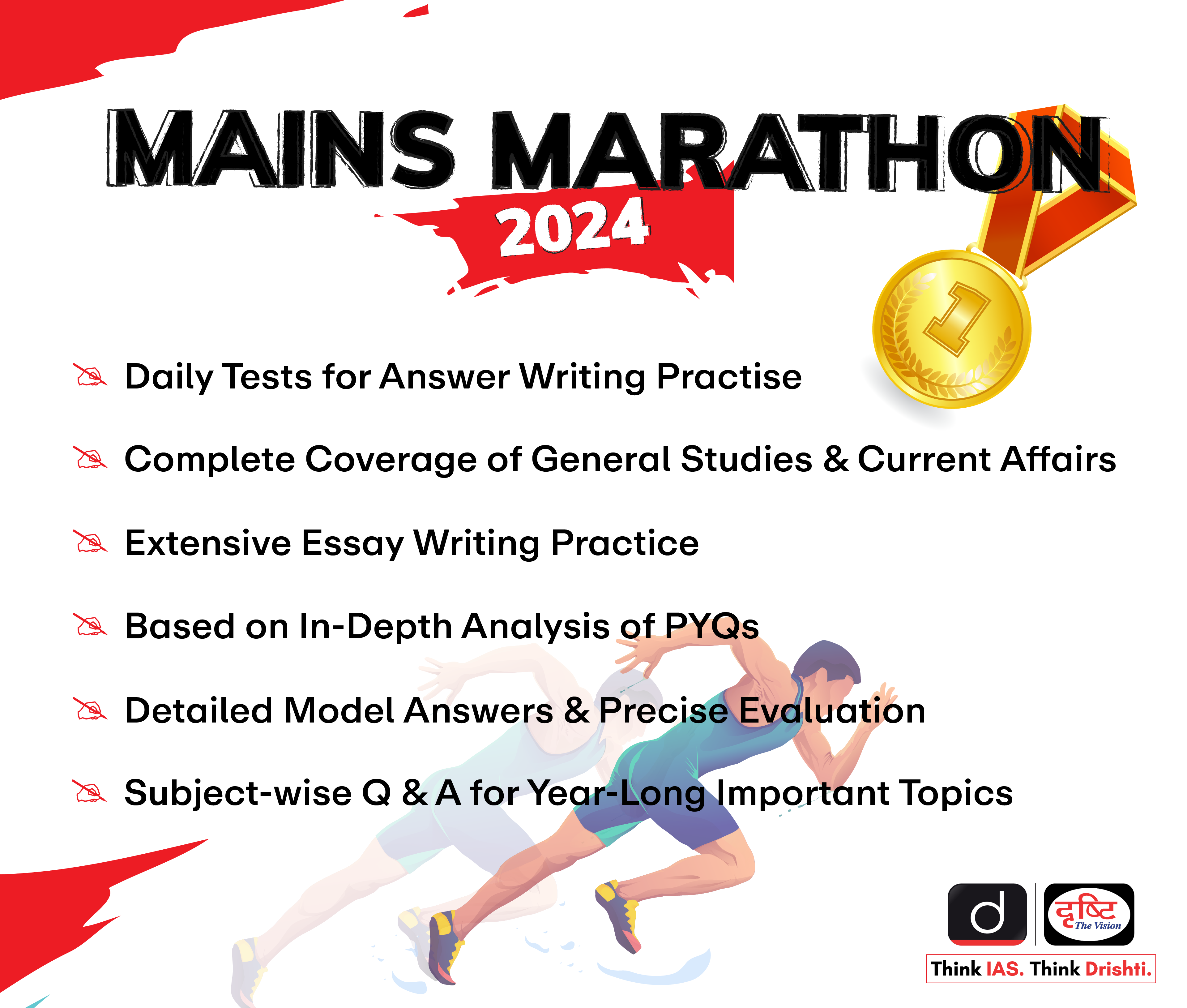
Governance
Extension of Smart Cities Mission
For Prelims: Smart Cities Mission, Centrally Sponsored Scheme, Sustainable development, Special Purpose Vehicle (SPV), Public-Private Partnership (PPP), Atal Mission for Urban, Rejuvenation and Urban Transformation (AMRUT), Pradhan Mantri Awas Yojana-Urban (PMAY-U), Climate Smart Cities Assessment Framework 2.0, TULIP-The Urban Learning Internship Program
For Mains: Smart Cities Mission: Significance & Challenges
Why in News?
Recently, the Central Government has decided to extend the deadline for Smart Cities Mission till 31st March 2025.
- Initially planned for completion by 2020, the mission had already been extended twice.
What is the Smart Cities Mission (SCM)?
- About:
- It is a Centrally Sponsored Scheme, launched in June 2015 to transform 100 cities to provide the necessary core infrastructure and clean and sustainable environment to enable a decent quality of life to their citizens through the application of "Smart Solutions".
- It aimed to improve the quality of life for citizens through sustainable and inclusive development.
- Components of the SCM:
-
Area-based Development:
- Redevelopment (City Renewal): Renewal of existing urban areas to improve infrastructure and amenities. E.g. Bhendi Bazar, Mumbai.
- Retrofitting (City Improvement): Upgrading infrastructure in existing areas to make them more efficient and sustainable. E.g. Local Area Development (Ahmedabad).
- Greenfield Projects (City Extension): Development of new urban areas with a focus on sustainability and smart technologies. E.g. New Town, Kolkata, Naya Raipur, GIFT City (Gujarat International Finance Tec-City).
- Pan-City Solutions:
- Implementation of Information and Communication Technology (ICT) solutions across various sectors such as e-governance, waste management, water management, energy management, urban mobility, and skill development.
-
- Governance Structure:
- To enhance effectiveness, a new governance model was adopted.
- A Special Purpose Vehicle (SPV) was created under the Companies Act, 2013 led by a bureaucrat or a representative of a Multinational Corporations (MNC).
- To enhance effectiveness, a new governance model was adopted.
- Financing of Smart Cities:
- The SCM receives Rs. 48,000 crores over 5 years from the Central Government, averaging Rs. 100 crore per city per year.
- States and Urban Local Bodies (ULB) are required to contribute an equal amount, resulting in a total of nearly Rs. 1 lakh crore for Smart Cities development.
- Convergence with Other Government Schemes:
- The SCM can be strategically converged with other Central and State Government programs to utilise its full potential.
- Benefits of Convergence:
- Combining resources and objectives of SCM with schemes like AMRUT (urban transformation), Swachh Bharat Mission (cleanliness), HRIDAY (heritage city development), Digital India, Skill Development, and Housing for All leads to a more comprehensive approach.
- Existing funds and infrastructure from various schemes can be leveraged to achieve common goals within the SCM framework.
- Convergence ensures social infrastructure (health, education, culture) is addressed alongside physical infrastructure development in smart cities.
What is a Smart City?
- A Smart City is a concept that refers to the use of technology, data, and innovative solutions to improve the efficiency, sustainability, and quality of life in urban areas.
- Core Infrastructure Elements of a Smart City include:
- Adequate water supply,
- Assured electricity supply,
- Sanitation, including solid waste management,
- Efficient urban mobility and public transport,
- Affordable housing, especially for the poor,
- Robust IT connectivity and digitalisation,
- Good governance, especially e-Governance and citizen participation,
- Sustainable environment,
- Safety and security of citizens, particularly women, children and the elderly, and
- Health and education.
Note:
Cities accommodate nearly 31% of India's current population and contribute 63% of Gross Domestic Product (GDP) as per Census 2011. Urban areas are expected to house 40% of India's population and contribute 75% of India's GDP by 2030.
What are the Challenges Faced by the Smart Cities Mission?
- Lack of Clarity in Definition: The SCM has acknowledged the lack of a universal definition for the term "smart city." This recognition reflects the understanding that each city's vision for a smart city is shaped by its unique local contexts and aspirations. However, this ambiguity in the conceptualisation of a smart city poses a challenge in effectively allocating resources and prioritizing projects.
- The conceptualisation of a Smart City varies significantly from one city to another, and even from country to country. These differences are influenced by factors such as the level of development, the willingness to embrace change and reform, the availability of resources, and the aspirations of the city's residents.
- Delay in Project Completion: Despite the extension of the deadline, a significant number of projects (around 10%) are still incomplete, indicating delays in execution. This can be attributed to factors such as inadequate planning, lack of technical expertise, and issues in land acquisition and clearances.
- Inadequate Funding and Its Utilisation: While 74 cities have received 100% of their central share, 26 cities are yet to get the full funding due to the slow progress of projects.
- The SPV model adopted for smart city projects has faced objections due to its misalignment with the 74th Constitutional Amendment. This has resulted in criticism of the top-down governance structure of the smart city initiatives.
- Lack of Coordination: Effective coordination between the central, state, and local governments has been a challenge due to differences in priorities, bureaucratic hurdles, and lack of clarity in roles and responsibilities that have hindered the seamless implementation of the mission.
- Sustainability Concerns: There are doubts about the long-term sustainability of the smart city projects, as many of them focus on technology-driven solutions rather than addressing the fundamental issues of urban planning and governance.
- Displacement and Social Impact: According to the World Bank, in urban areas of India more than 49% of the population live in slums.
- The execution of smart city projects has led to the displacement of residents in poorer areas, such as street vendors, disrupting the fabric of urban communities. Infrastructure development in certain towns has contributed to increased urban flooding due to disruptions in water channels and contours.
What Should be the Steps Taken to Strengthen Smart Cities Mission?
- Effective Governance and Implementation: Appointing CEOs with fixed tenures ensures continuity and attracts qualified professionals. Stakeholder representation, including experts and Member of Parliaments (MPs), fosters inclusive decision-making.
- Strategic Project Focus: The SCM digital infrastructure is expected to generate and utilise vast amounts of data from diverse sources. Therefore, it is necessary that a robust system should be implemented to protect these platforms from cyberattacks and guarantee adequate protection for sensitive public and private data.
- Data Security and Upgradation: Establish robust digital infrastructure protection to counter cyber threats and safeguard data privacy.
- Develop comprehensive Operation and Maintenance (O&M) strategies to maximise infrastructure lifespan and ensure timely upgrades.
- Building Capacity and Funding: Strengthen Urban Local Bodies (ULBs) in smaller cities through capacity building programs. Central government assistance can be crucial for organisational restructuring and skill development.
- Ensuring Project Completion: The Ministry's role should extend beyond fund allocation. Active monitoring and providing expertise for timely project execution are essential.
- Global Knowledge Sharing: India's focus on sustainable urban development positions it to guide similar projects in developing nations (Example: Gelephu Smart City Project in Bhutan).
- The Gelephu Smart City Project aims to create an economic corridor connecting South Asia with Southeast Asia through India's northeastern States. It will prioritise environmental standards and sustainability, seeking quality investment from specially screened international companies.
|
Drishti Mains Question: Q. What is the Smart Cities Mission? What are the challenges faced by this and suggest the measures to address these challenges. |
UPSC Civil Services Examination, Previous Year Question (PYQ)
Mains:
Q. With a brief background of quality of urban life in India, introduce the objectives and strategy of the ‘Smart City Programme.’ (2016)

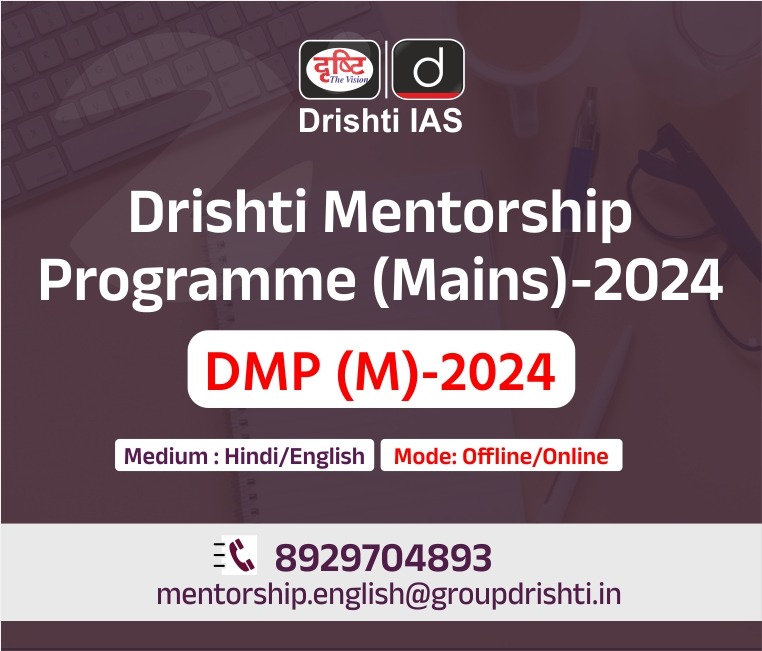
Important Facts For Prelims
Satellite-Based Communication
Why in News?
Recently, satellite-based communication for internet connectivity has gained traction, although its evolution has shifted away from being user-centric, raising questions about its viability for users in India.
What is Satellite Based Communication?
- About:
- A communications satellite is a type of artificial satellite placed in Earth’s orbit to send and receive communication data between a source and a destination.
- With over three thousand communication satellites in multiple orbits today, millions worldwide rely on satellite communications to deliver radio, television, and military applications.
- Satellite communications have opened access to voice and data communication services across the globe in places where terrestrial cellular and broadband connectivity is not available or network coverage is patchy.
- Types:
- Based on the orbit, communication satellites fall into one of four categories:
- Geostationary Earth orbit (GEO)
- Medium Earth orbit (MEO)
- Low Earth orbit (LEO)
- Highly elliptical orbit (HEO)
- Based on the orbit, communication satellites fall into one of four categories:
- Working:
- Satellite communications use orbiting satellites and ground stations to transmit and relay information via microwaves between points on Earth.
- There are three stages in the process:
- Uplink
- Transponder
- Downlink
- For example, in live television, a broadcaster sends a signal to a satellite (uplink), which then boosts and changes the frequency of the signal (transponder), before sending it back to Earth stations (downlink).
- Current Status of Satcom Services in India:
- Even though technology is ready for India, Satcom services are not yet operational in India primarily due to pending allocation of satellite bandwidth by the government.
- Recently, Reliance Industries' Jio Platforms has received approval from India's space regulator, IN-SPACe, to deploy satellites for gigabit fibre internet services, pending additional clearances from the telecom department to commence operations.
- Even though technology is ready for India, Satcom services are not yet operational in India primarily due to pending allocation of satellite bandwidth by the government.
- Target Audience and Services:
- Satcom operators plan to target both individual consumers and enterprises.
- Starlink is known for its consumer-focused approach with portable routers, while Airtel and Reliance Jio are looking at both consumer and enterprise markets.
- Technological Readiness:
- Device compatibility is an issue as specialised antennas are required to receive satellite signals. This adds to the cost for consumers.
- Moreover, mainstream integration of satellite receivers in consumer devices has been limited so far, despite efforts by companies like Apple and Qualcomm.
- Challenges and Limitations:
- Satcom services face challenges such as high setup costs, especially for consumer applications.
- The cost of equipment, including specialised antennas, remains a barrier. Pricing is another concern as satcom services are perceived as expensive compared to terrestrial broadband.
- Future Outlook:
- The future of satcom in India hinges on regulatory approvals, technological advancements, and addressing cost concerns. The entry of new players like Project Kuiper could potentially intensify competition and innovation in the market.
UPSC Civil Services Examination, Previous Year Question (PYQ)
Prelims:
Q. The terms ‘Event Horizon’, ‘Singularity’, ‘String Theory’ and ‘Standard Model’ are sometimes seen in the news in the context of (2017)
(a) Observation and understanding of the Universe
(b) Study of the solar and the lunar eclipses
(c) Placing satellites in the orbit of the Earth
(d) Origin and evolution of living organisms on the Earth
Ans: (a)
Q. For the measurement/estimation of which of the following are satellite images/remote sensing data used? (2019)
- Chlorophyll content in the vegetation of a specific location
- Greenhouse gas emissions from rice paddies of a specific location
- Land surface temperatures of a specific location
Select the correct answer using the code given below.
(a) 1 only
(b) 2 and 3 only
(c) 3 only
(d) 1, 2 and 3
Ans: (d)


Important Facts For Prelims
Genome Sequencing
Why in News?
Recently, a report published in the journal Nature revealed that a team of archaeologists and scientists from Germany, Mexico, Spain, the U.K. and the US has sequenced genetic material obtained from the human remains found from an ancient burial place.
What is Genome Sequencing?
- About:
- Genome sequencing is a process of determining the complete DNA sequence of an organism's genome.
- A genome is a complete set of DNA that contains all of the genes of an organism.
- It involves figuring out the order of bases (Adenine, Cytosine, Guanines, and Thymine) that make up an organism's DNA. It is supported by automated DNA sequencing methods and computer software to assemble the massive sequence data.
- Genome sequencing is a process of determining the complete DNA sequence of an organism's genome.
Gene Editing
- Gene editing, also known as genome editing, is a technology that allows for the precise modification of the genetic material (DNA or RNA) of an organism.
- It involves the use of specialised tools to add, remove, or alter specific DNA sequences within a genome.
- Methods:
-
CRISPR-Cas9 (Clustered Regularly Interspaced Short Palindromic Repeats):
- It is the most widely used and versatile gene editing tool.
- It uses a guide RNA (gRNA) to direct the Cas9 enzyme to the target DNA sequence, where it can make a double-strand break. The cell's natural DNA repair mechanisms are then used to either disrupt the target gene or insert a desired DNA sequence.
- Zinc Finger Nucleases (ZFNs):
-
ZFNs are composed of a DNA-binding domain (zinc finger proteins) and a DNA-cleaving domain (FokI endonuclease).
- The zinc finger proteins are designed to recognize and bind to specific DNA sequences, and the FokI domain then cleaves the DNA. ZFNs can be engineered to target and edit specific genomic regions.
-
-
- Difference Between Gene Editing and Gene Sequencing:
| Characteristics | Gene Sequencing | Gene Editing |
| Definition | The process of determining the precise order of nucleotides (A, T, C, G) in a DNA or RNA molecule. | The process of making targeted modifications to the DNA sequence of a gene or genes. |
| Purpose | To obtain the complete or partial sequence of a gene, a set of genes, or an entire genome. | To introduce desired changes, such as correcting genetic defects, modifying gene expression, or introducing new genetic traits. |
| Techniques | Sanger sequencing, Next-Generation Sequencing (NGS), and others. | CRISPR-Cas9, zinc finger nucleases, TALENs, and other specialised tools. |
| Outcome | Provides information about the genetic makeup and composition of an organism. | Allows for the direct manipulation and alteration of the genetic code. |
| Modification | Does not directly modify the genetic material. | Enables the addition, removal, or alteration of specific DNA sequences. |
- Methods of Genome Sequencing:
-
Clone-by-Clone Approach:
-
In this approach, the genome is first broken up into relatively large segments called clones, which are typically around 150,000 base pairs (bp) in length. Genome mapping techniques are then used to determine the location of each clone within the overall genome.
- Next, each clone is further fragmented into smaller, overlapping pieces of around 500 bp in size, which are suitable for sequencing.
- Finally, the individual sequenced pieces are assembled using the overlapping regions to reconstruct the complete sequence of the entire clone.
-
- Whole-Genome Shotgun Approach:
-
This method involves randomly fragmenting the entire genome into small pieces.
- These small fragments are then sequenced, without any prior knowledge of their genomic location.
- The sequenced fragments are then computationally reassembled into the full genome sequence by identifying and aligning the overlapping regions between the fragments.
-
- The clone-by-clone approach is often used for large and complex genomes, while the whole-genome shotgun method is more suitable for smaller and less complex genomes.
-
- Applications:
- Finding origin of Epidemics: Genome sequencing helps researchers understand the genetic makeup of pathogens, tracing the source and spread of outbreaks like SARS-CoV-2.
- Controlling Disease Spread: Genome analysis allows monitoring pathogen evolution and identifying mutation patterns, incubation periods, and transmission rates to inform prevention strategies.
- Healthcare Applications: It enables personalised treatments, guides targeted public health interventions, reveals genetic underpinnings of diseases like cancer, and informs drug efficacy and safety for diverse populations.
- Agricultural Advancements: Crop genome sequencing can enhance understanding of genetic susceptibility to pests and environmental stressors.
- Evolutionary Studies: Genome data can contribute to mapping species' migrations and evolution, furthering our knowledge of human origins and life's history.
Important genome sequencing initiatives
- Human Genome Project:
- The Human Genome Project (HGP) from 1990 to 2003, was a landmark international effort to map and sequence the entire human genome.
- It was coordinated by the US National Institute of Health (NIH) and the U.S. Department of Energy.
- The project revolutionised medicine and advanced DNA sequencing technology.
- Developments like Her2/neu for breast cancer treatment and CYP450 for antidepressant response resulted from the project.
- The Human Genome Project (HGP) from 1990 to 2003, was a landmark international effort to map and sequence the entire human genome.
- Genome India Project:
- It was launched in 2020 as a flagship initiative aimed at comprehensively deciphering the genetic makeup of the Indian population.
- It is funded and coordinated by the Department of Biotechnology (DBT), Government of India.
- IndiGen Project
- It was undertaken by CSIR in April 2019.
- It aims to undertake whole genome sequencing of diverse ethnic groups from India.
- The objective is to enable genetic epidemiology and develop public health technologies applications using population genome data.
UPSC Civil Services Examination, Previous Year Questions (PYQs)
Q1. With reference to agriculture in India, how can the technique of ‘genome sequencing’, often seen in the news, be used in the immediate future? (2017)
- Genome sequencing can be used to identify genetic markers for disease resistance and drought tolerance in various crop plants.
- This technique helps in reducing the time required to develop new varieties of crop plants.
- It can be used to decipher the host-pathogen relationships in crops.
Select the correct answer using the code given below:
(a) 1 only
(b) 2 and 3 only
(c) 1 and 3 only
(d) 1, 2 and 3
Ans: (d)


